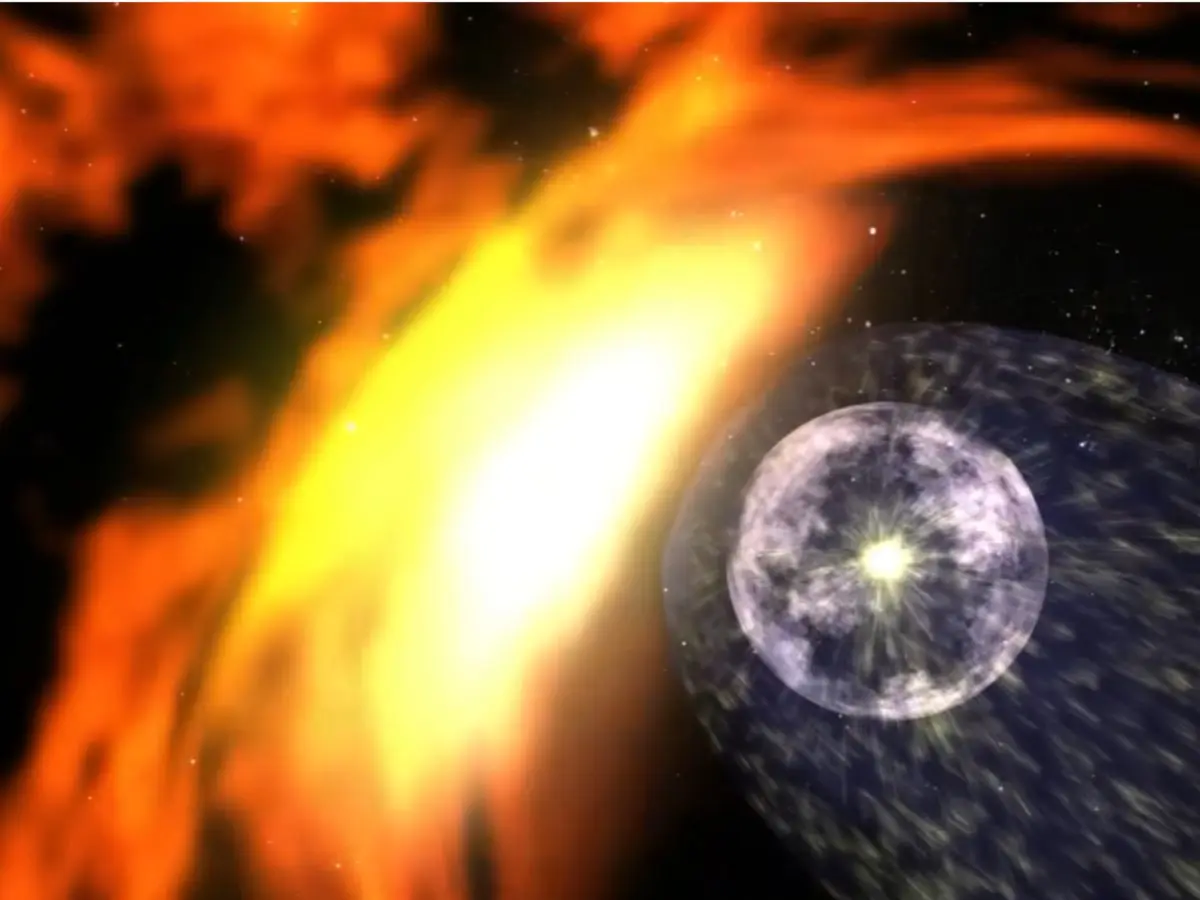Astronomers may have uncovered a never-before-seen type of stellar explosion after artificial intelligence, inspired by the way Spotify recommends music, flagged a peculiar event in deep space. The discovery, named SN 2023zkd, was made in July 2023 by the Zwicky Transient Facility at the Palomar Observatory in California. Unlike typical detections that rely on chance, this one was guided by an AI system trained to identify unusual night-sky activity in real time.
SN 2023zkd initially appeared to be an ordinary supernova, but closer inspection revealed strange behaviour. Located about 730 million light years away, the explosion first brightened, dimmed, and then unexpectedly brightened again. Archival data later revealed that the dying star had been slowly brightening for four years before it exploded, a pattern rarely recorded in supernovae.
A deadly dance between star and black hole
The research, led by the Center for Astrophysics | Harvard & Smithsonian and the Massachusetts Institute of Technology as part of the Young Supernova Experiment, suggests the explosion may have been caused by a massive star interacting with a nearby black hole. According to LiveScience, lead author Alexander Gagliano, a fellow at the NSF Institute for Artificial Intelligence and Fundamental Interactions said, “Our analysis shows that the blast was sparked by a catastrophic encounter with a black hole companion, and is the strongest evidence to date that such close interactions can actually detonate a star.”
One possibility is that the star was gradually being pulled into the black hole’s gravity as the pair spiralled closer together, triggering gravitational stress that caused it to explode. Another interpretation is that the black hole completely shredded the star before consuming its debris, with the supernova’s light created as that material crashed into surrounding gas. In either case, astronomers believe a heavier black hole was left behind.
How AI spotted the unusual event
The algorithm used in the discovery is called Lightcurve Anomaly Identification and Similarity Search (LAISS). Built on the recommendation model that powers Spotify, LAISS scans astronomical data for anomalies by comparing light signals with a large dataset of known objects. In this case, it flagged SN 2023zkd months before the most unusual behaviour occurred, giving astronomers time to observe it from both ground-based and space telescopes, including NASA’s Neil Gehrels Swift Observatory, the Pan-STARRS telescopes, and the Magellan and MMT facilities.
V. Ashley Villar, co-author and assistant professor of astronomy at Harvard, also said, “2023zkd shows some of the clearest signs we’ve seen of a massive star interacting with a companion in the years before explosion. We think this might be part of a whole class of hidden explosions that AI will help us discover,” wrote Live Science.
With upcoming projects like the Vera C. Rubin Observatory set to survey the entire night sky every few days, astronomers believe AI systems such as LAISS will play a central role in capturing rare, complex cosmic events as they unfold, and in piecing together how massive stars live and die.
